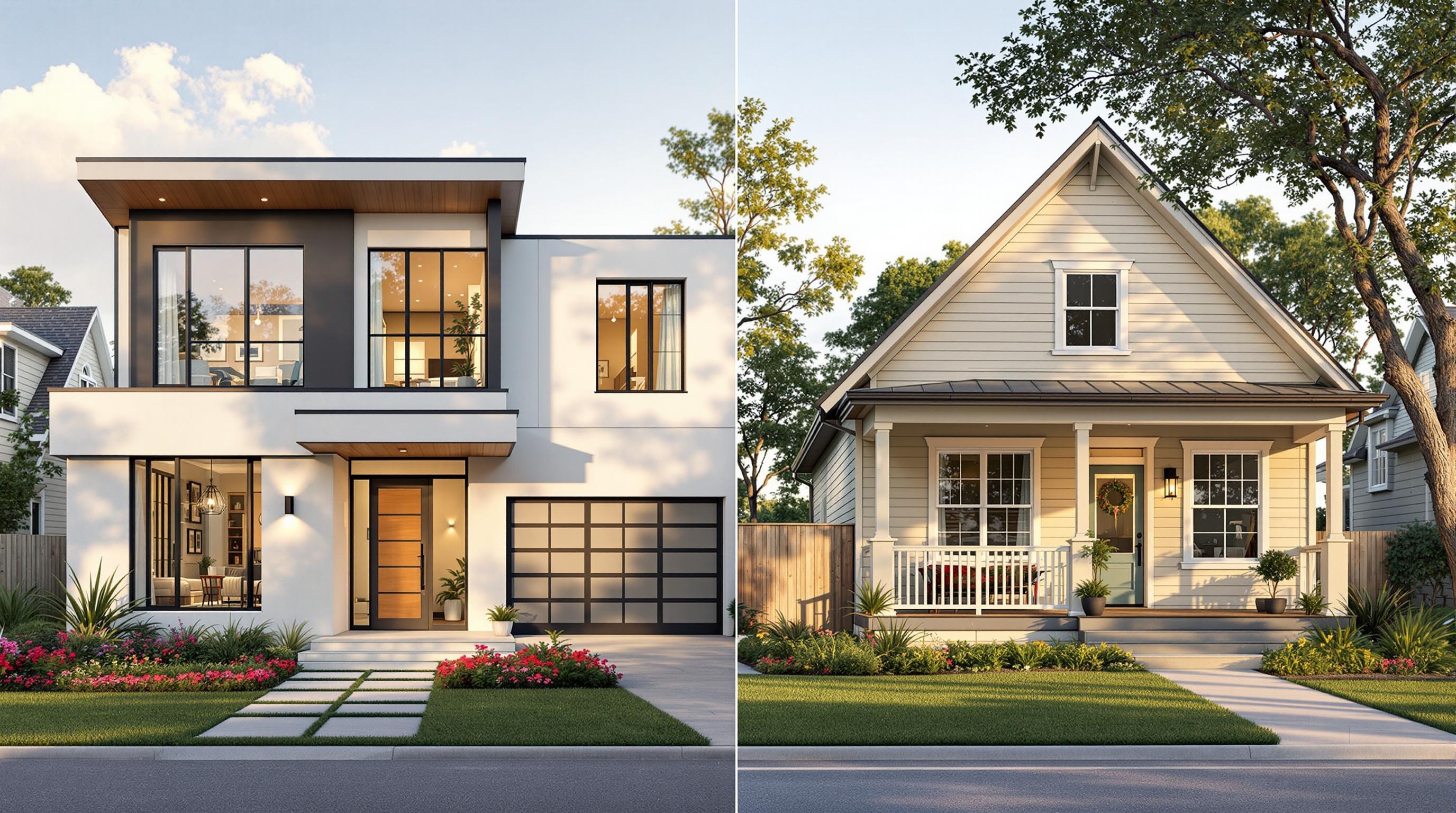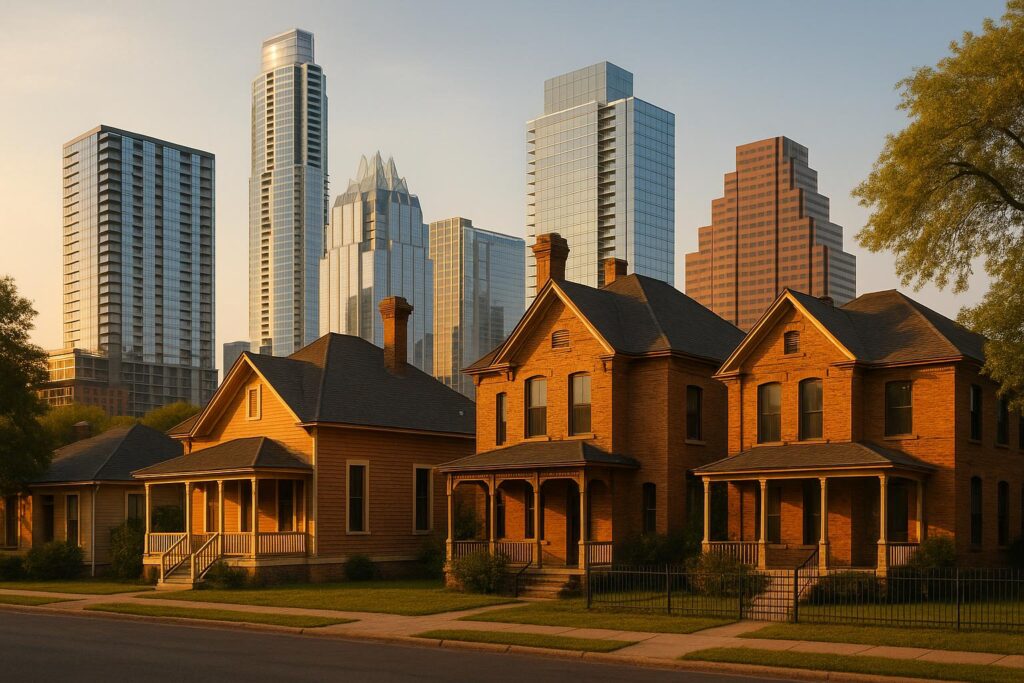- New Builds: Modern features, energy-efficient, customizable designs, but higher prices and longer wait times.
- Resale Homes: Lower upfront costs, established neighborhoods, unique charm, but may need renovations and have higher maintenance costs.
Key Points to Consider:
- Price: New builds cost more upfront; resale homes may need updates later.
- Location: New builds are often in newer suburbs; resale homes are in established areas.
- Timeline: New builds have longer construction timelines; resale homes are move-in ready.
- Customization: New builds allow design choices during construction; resale homes require post-purchase changes.
- Maintenance: New builds require less maintenance initially; resale homes may need repairs.
Quick Comparison:
| Factor | New Builds | Resale Homes |
|---|---|---|
| Initial Cost | Higher starting price | Lower upfront, may need updates |
| Move-in Timeline | Longer (due to construction) | Faster (move-in ready) |
| Customization | Options during build | Limited post-purchase |
| Location | Newer suburbs | Established neighborhoods |
| Maintenance | Minimal early on | May require repairs/updates |
Tip: Work with an experienced Austin real estate agent to find the best fit for your needs and budget.
Price Analysis: New vs. Existing Homes
Purchase Price Comparison
In Austin, newly built homes typically come with a higher price tag than resale homes. This price difference often reflects the use of modern construction methods and premium features. On the other hand, resale homes tend to have a lower upfront cost but might require immediate updates or renovations, which can add to the overall expense. These differences also influence the long-term costs of owning the property.
Operating Costs
Newly built homes are designed with energy-efficient appliances, better insulation, and modern HVAC systems, which can lead to lower monthly utility bills and reduced maintenance expenses. However, while resale homes might have a cheaper purchase price, their older systems often come with higher repair and maintenance costs. It’s worth noting that new build communities may charge higher HOA fees to maintain shared amenities, which could offset some of the savings from lower utility expenses.
Loan Options
The financing options available for new and resale homes differ. New builds often come with options like construction-to-permanent loans and builder-sponsored financing programs. In contrast, resale homes qualify for a wider range of loans, including conventional, FHA, VA, and renovation loans. It’s important to consider that new builds might require larger down payments, even if the interest rates are similar to those for resale properties.
Home Features and Living Experience
Design and Architecture
Newly built homes cater to modern living with open-concept layouts, integrated smart home features, and energy-saving systems. These spaces are designed for a contemporary and adaptable lifestyle. On the other hand, resale homes often reflect the charm of their time, featuring more defined room layouts and unique architectural touches. Many older homes include details like original hardwood floors, intricate trim work, and larger lot sizes that add character and appeal.
Location and Community
The surrounding community also plays a big role in the decision. New construction neighborhoods often come with shared amenities like pools, fitness centers, and walking paths, encouraging social connections and active lifestyles. In contrast, established neighborhoods are known for their mature landscaping, well-developed infrastructure, and proximity to cultural hubs, local dining, and boutique shopping. These areas often provide a sense of history and a close-knit community vibe.
Choosing between a new build and a resale home shapes not only the design of your living space but also your daily lifestyle. First-time buyers should weigh these factors to find the best fit for their needs and preferences.
New Construction vs. Resale Homes: Which Should You Buy …
sbb-itb-4c99469
Market Performance and Growth
The market’s performance plays a major role in determining a property’s long-term value, alongside factors like costs and design.
Property Value Growth
Austin’s real estate market is constantly changing. New construction often boosts the market with modern designs and energy-saving features. On the other hand, resale homes in established neighborhoods benefit from stable locations and community perks. For first-time buyers, understanding these differences is crucial when assessing potential future value. Long-term property growth is influenced by local demand and shifting market trends.
Market Availability
Newly built homes, usually part of planned communities, provide a more predictable supply for buyers. In contrast, resale homes in older neighborhoods often experience higher demand and limited availability. First-time buyers should stay informed about these patterns and seek advice from knowledgeable local professionals.
Purchase Process and Timing
The way you buy a home in Austin can look very different depending on whether you’re considering a new build or a resale property. It’s not just about price and features – timing and the overall process play a big role too.
Availability and Access
Buying a new construction home often means waiting longer to move in. There are staged inspections, multiple deposits spread out over time, and strict deadlines for making design choices. On the other hand, resale homes follow a simpler process. With a more straightforward closing timeline, you can typically complete the necessary steps much faster.
Design Changes and Inspections
New builds let you personalize certain aspects of the home – like finishes and upgrades – but you’ll need to stick to the builder’s deadlines and guidelines. Resale homes, however, are sold as-is, so you’ll see their condition upfront. If you want to make changes, those will have to happen after the purchase.
Inspections also vary. New construction requires several inspections throughout the building process to ensure everything meets quality and code standards. Resale homes usually have one comprehensive inspection before closing. These differences can affect not only when you’ll move in but also how satisfied you’ll be with your property in the long run.
Knowing these differences can help you decide which option fits your timeline and priorities. The Austin Local Team works with experienced agents who can guide you through either process, making sure you’re prepared every step of the way.
Summary and Recommendations
Decide based on your priorities, timeline, and budget: new construction offers modern features and customization, while resale homes provide established locations and quicker availability.
Comparison
| Factor | New Construction | Resale Homes |
|---|---|---|
| Initial Cost | Higher starting price | More room for negotiation |
| Move-in Timeline | Longer due to construction | Faster move-in |
| Maintenance | Minimal in early years | May require updates |
| Location | Often in newer suburbs | Established neighborhoods |
| Customization | Options during the build | Limited to post-purchase |
Use this table to weigh your options, and seek expert advice to make the right choice.
Finding Professional Help
Navigating Austin’s real estate market can be tricky, especially for first-time buyers. Working with experienced agents who understand both new construction and resale properties is key. The Austin Local Team connects buyers with agents who provide:
- Insights into market trends across Austin neighborhoods
- Evaluations of future property value
- Awareness of hidden costs for both property types
- Tailored negotiation strategies
Having the right guidance ensures you make an informed decision in Austin’s competitive housing market.





